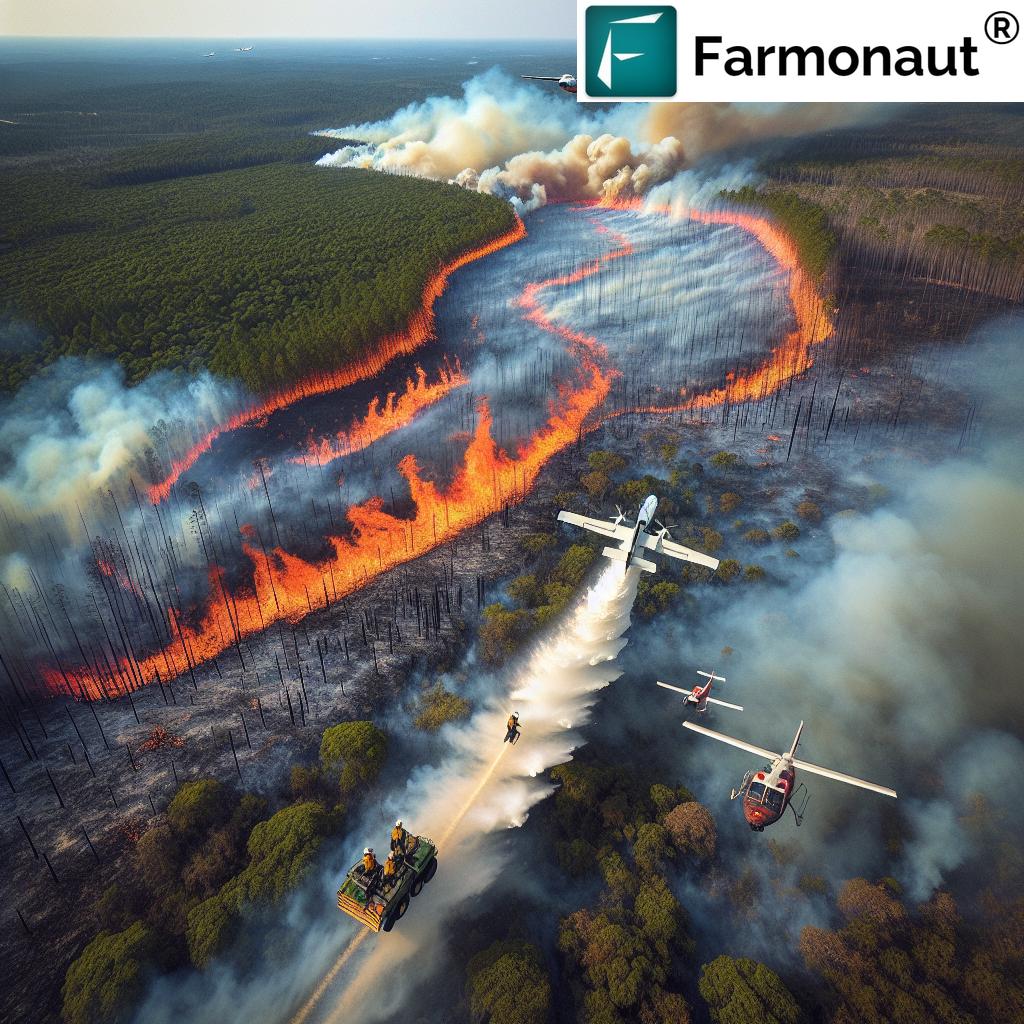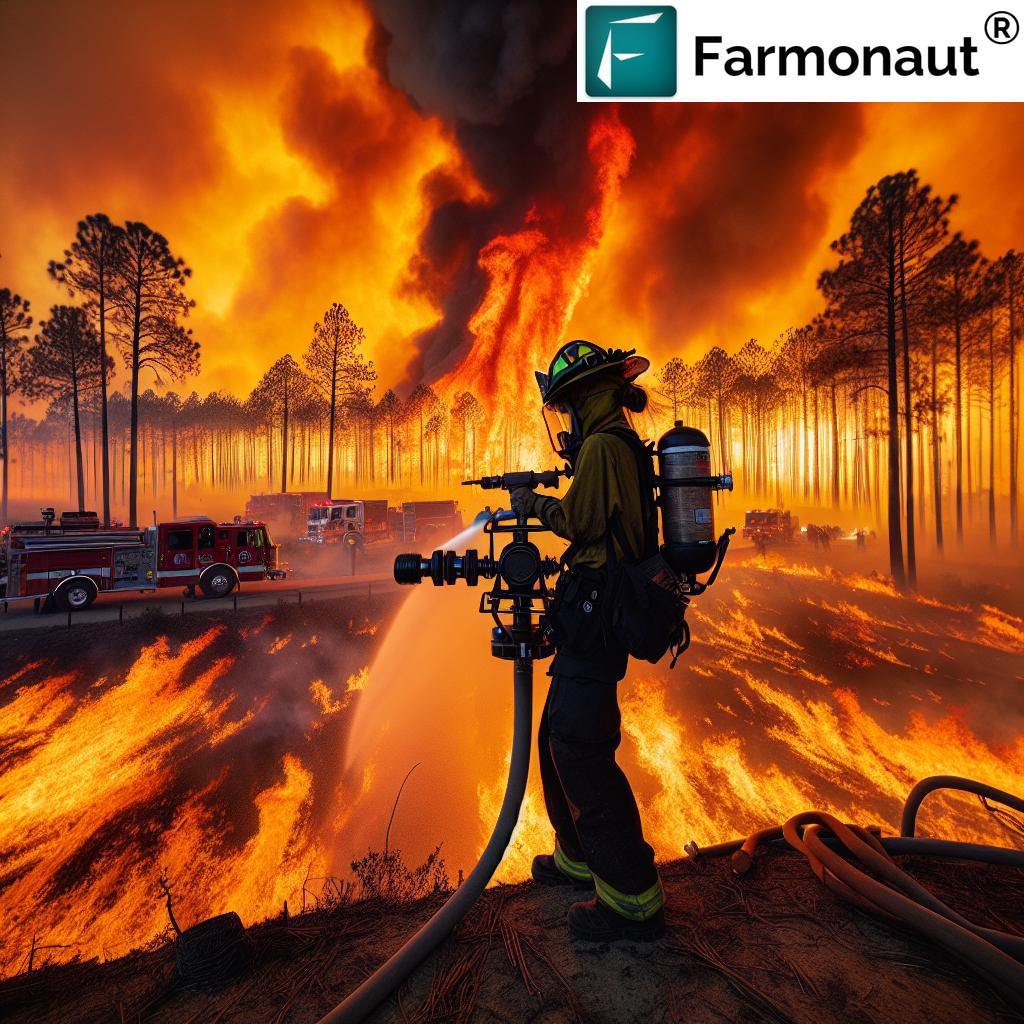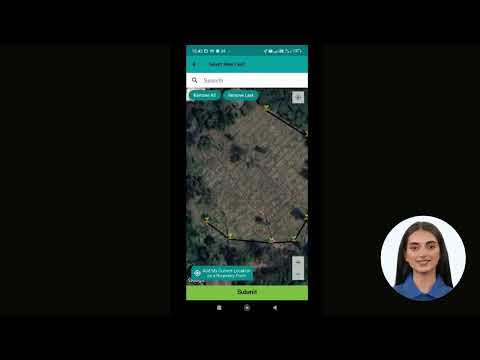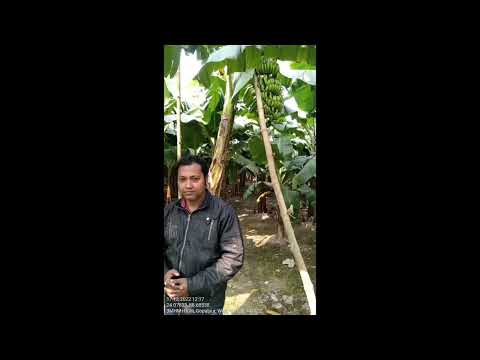Breaking News: Berkeley County Brush Fire Threatens 300 Acres – South Carolina Wildfire Update and Safety Precautions
“Berkeley County brush fire in South Carolina threatens 300 acres, with four dozers plowing firebreaks to contain the spread.”
As we witness the unfolding crisis in Berkeley County, South Carolina, our hearts go out to the affected communities and the brave firefighters battling this formidable brush fire. The situation serves as a stark reminder of the devastating power of wildfires and the critical importance of fire prevention and safety measures. In this comprehensive update, we’ll delve into the latest developments, explore the response efforts, and provide essential safety precautions for residents in the affected areas and beyond.
The Berkeley County Brush Fire: A Closer Look
The Berkeley County brush fire has quickly become a focal point of concern for South Carolina forestry officials and local residents alike. As of Thursday afternoon, the fire has already consumed approximately 300 acres of land off Sandlapper Lane in upper Berkeley County. While no structures were reported to be under immediate threat as of 2:30 p.m., the situation remains fluid and potentially dangerous.
This wildfire comes at a particularly challenging time, as forecasters had recently warned of elevated fire danger conditions throughout the region. The combination of relatively low humidity, dry conditions, and gusty winds has created a perfect storm for fire propagation, making containment efforts all the more crucial.

South Carolina Wildfire Updates: The Response in Action
The South Carolina Forestry Commission has swiftly mobilized its resources to combat this growing threat. Let’s break down the key components of their forestry fire response:
- Aerial Observation: A crucial aspect of the wildfire management strategy involves the use of aircraft for aerial wildfire observation. This allows officials to gain a comprehensive view of the fire’s spread and behavior, informing ground-based containment efforts.
- Ground Operations: As of the latest update, four dozers have been deployed to the scene, tasked with plowing firebreaks around the perimeter of the fire. These firebreak techniques are essential in creating barriers to slow or stop the fire’s advance.
- Additional Resources: Recognizing the severity of the situation, an additional dozer is being brought in to reinforce the containment efforts. This demonstrates the forestry commission’s commitment to escalating their response as needed.
The use of both aerial and ground-based resources highlights the multi-faceted approach necessary for effective wildfire management. By combining these strategies, officials aim to gain control over the brush fire and prevent further spread into surrounding areas.
Fire Danger Conditions: Understanding the Perfect Storm
The current brush fire in Berkeley County didn’t occur in isolation. Several environmental factors have contributed to the elevated fire risk across South Carolina:
- Low Humidity: Dry air can quickly sap moisture from vegetation, making it more susceptible to ignition.
- Dry Conditions: A lack of recent rainfall has left the landscape parched and primed for fire.
- Gusty Winds: Strong winds can rapidly spread flames and embers, complicating containment efforts.
These conditions have prompted officials to implement stringent measures to mitigate fire risks. Most notably, a statewide outdoor burning ban has been in effect for nearly a week, underscoring the seriousness of the current fire danger.
Brush Fire Containment Strategies: A Race Against Time
As the Berkeley County brush fire continues to pose a significant threat, let’s examine the key strategies being employed to contain its spread:
- Firebreaks: The primary line of defense involves creating firebreaks – strips of land cleared of vegetation to halt the fire’s advance. The four dozers currently on site are working tirelessly to establish these crucial barriers.
- Aerial Support: Aircraft equipped for aerial wildfire observation provide real-time intelligence to ground crews, allowing for more strategic deployment of resources.
- Resource Allocation: By bringing in additional equipment, such as the fifth dozer, officials are ensuring they have the necessary tools to adapt to changing conditions.
- Coordination: Effective communication between aerial observers, ground crews, and command centers is vital for a cohesive response effort.
These containment strategies are designed to work in concert, creating a multi-layered approach to wildfire management. However, their success ultimately depends on the dedication of the firefighters and forestry officials on the ground.
“Statewide outdoor burning ban in effect as South Carolina battles wildfire amid low humidity and gusty winds.”
Wildfire Safety Precautions: Protecting Lives and Property
In light of the ongoing Berkeley County brush fire and the elevated fire danger conditions across South Carolina, it’s crucial for residents to take proactive steps to ensure their safety and protect their property. Here are some essential wildfire safety precautions:
- Stay Informed: Keep abreast of local news and official announcements regarding the fire’s status and any evacuation orders.
- Create Defensible Space: Clear a 30-foot buffer zone around your home, removing dry vegetation and potential fuel sources.
- Prepare an Emergency Kit: Assemble a kit with essentials like water, non-perishable food, medications, and important documents.
- Have an Evacuation Plan: Familiarize yourself with multiple escape routes and designate a meeting point for family members.
- Comply with Burning Bans: Strictly adhere to the statewide outdoor burning ban currently in effect.
By following these precautions, residents can significantly reduce their risk and contribute to overall community safety during this challenging period.

The Role of Technology in Wildfire Management
As we face increasingly complex wildfire scenarios, technology plays a crucial role in enhancing our ability to predict, monitor, and respond to these threats. Advanced tools and platforms are revolutionizing the way we approach wildfire management, from prevention to containment and recovery.
One such innovative solution is offered by Farmonaut’s crop plantation and forest advisory services. While primarily focused on agricultural applications, these satellite-based monitoring tools can also be invaluable for forest management and wildfire prevention. By providing real-time data on vegetation health and moisture levels, such technologies can help identify high-risk areas before fires even start.
Key technological advancements in wildfire management include:
- Satellite Imagery: High-resolution satellite data provides a bird’s-eye view of fire-prone areas, allowing for early detection and monitoring of active fires.
- Artificial Intelligence: AI algorithms can analyze vast amounts of data to predict fire behavior and optimize resource allocation.
- Drones: Unmanned aerial vehicles offer close-range observation capabilities, especially useful in areas too dangerous for human access.
- IoT Sensors: Networks of Internet of Things (IoT) devices can monitor environmental conditions in real-time, providing early warnings of fire-conducive conditions.
By leveraging these technologies, fire management agencies can make more informed decisions, potentially saving lives and protecting valuable natural resources.
Community Involvement in Wildfire Prevention
While professional firefighters and forestry officials lead the charge in battling wildfires like the one in Berkeley County, community involvement plays a crucial role in prevention and preparedness. Here are some ways residents can contribute to wildfire safety:
- Education: Stay informed about fire risks and safety measures. Attend community workshops or webinars on wildfire preparedness.
- Neighborhood Watch: Form or join local groups dedicated to fire safety, conducting regular checks of high-risk areas in your community.
- Proper Waste Disposal: Ensure all flammable materials are disposed of safely, reducing potential fuel sources for fires.
- Report Suspicious Activities: If you notice any concerning behavior that could lead to fire outbreaks, report it to local authorities immediately.
- Support Local Fire Departments: Consider volunteering or donating to your local fire department to enhance their capabilities.
By working together, communities can significantly reduce the risk of wildfires and improve their collective response when fires do occur.
The Environmental Impact of Wildfires
While our immediate focus is on containing the Berkeley County brush fire and ensuring public safety, it’s important to consider the broader environmental implications of wildfires. These events can have far-reaching consequences on ecosystems, air quality, and even climate change.
Some key environmental impacts include:
- Habitat Destruction: Wildfires can devastate local flora and fauna, potentially threatening endangered species.
- Soil Erosion: The loss of vegetation can lead to increased soil erosion, affecting water quality and landscape stability.
- Air Pollution: Smoke from wildfires contains particulate matter and harmful gases, posing health risks to nearby populations.
- Carbon Emissions: Large-scale fires release significant amounts of carbon dioxide, contributing to global warming.
Understanding these impacts underscores the importance of effective wildfire prevention and management strategies. It also highlights the need for comprehensive environmental monitoring tools, such as those offered by Farmonaut’s carbon footprinting services. While primarily designed for agricultural applications, these tools can be adapted to monitor and assess the environmental impact of wildfires, providing valuable data for recovery and mitigation efforts.
Looking Ahead: Long-term Strategies for Wildfire Management
As we continue to grapple with the immediate challenges posed by the Berkeley County brush fire, it’s crucial to consider long-term strategies for wildfire management in South Carolina and beyond. These approaches should aim to reduce fire risks, improve response capabilities, and enhance ecosystem resilience.
- Vegetation Management: Implementing regular controlled burns and mechanical thinning to reduce fuel loads in fire-prone areas.
- Land-use Planning: Developing policies that discourage development in high-risk fire zones and promote fire-resistant building practices.
- Climate Adaptation: Incorporating climate change projections into fire management strategies to anticipate and prepare for changing fire regimes.
- Research and Innovation: Investing in new technologies and methodologies for fire detection, prediction, and suppression.
- Public-Private Partnerships: Fostering collaboration between government agencies, private sector entities, and communities to enhance wildfire resilience.
By adopting a comprehensive, forward-thinking approach to wildfire management, we can work towards creating safer, more resilient communities in the face of this persistent threat.
South Carolina Wildfire Response and Safety Measures
| Wildfire Response Efforts | Safety Measures |
|---|---|
| Affected Area: 300 acres | Current Fire Danger Level: Elevated |
| Number of Dozers Deployed: 4 (5th en route) | Outdoor Burning Restrictions: Statewide ban in effect |
| Aerial Observation Methods: Aircraft surveillance | Recommended Precautions for Residents: Create defensible space, prepare emergency kit, stay informed |
| Firebreak Techniques: Dozer-plowed containment lines | Emergency Contact Information: Local fire department or 911 for immediate threats |
Conclusion: Staying Vigilant in the Face of Wildfire Threats
As we continue to monitor the Berkeley County brush fire and its impact on South Carolina, it’s clear that wildfire management requires a multifaceted approach combining immediate response tactics, long-term planning, and community engagement. The ongoing situation serves as a powerful reminder of the importance of fire safety and the need for constant vigilance in fire-prone areas.
By staying informed, adhering to safety guidelines, and supporting our firefighters and forestry officials, we can all play a part in mitigating the risks associated with wildfires. As we move forward, let’s commit to fostering a culture of fire awareness and preparedness, ensuring that our communities are better equipped to face these challenges in the future.
Remember, in times of crisis, it’s our collective effort that makes the difference. Stay safe, stay informed, and let’s work together to protect our homes, our communities, and our natural environment from the threat of wildfires.
FAQ Section
- Q: What caused the Berkeley County brush fire?
A: While the exact cause of this specific fire has not been officially determined, brush fires are often sparked by a combination of dry conditions, low humidity, and human activities. - Q: How long will the statewide outdoor burning ban remain in effect?
A: The duration of the ban depends on weather conditions and fire risk levels. Stay updated through official channels for the latest information. - Q: What should I do if I see smoke or fire near my property?
A: Immediately call 911 or your local fire department. Do not attempt to fight a wildfire on your own. - Q: How can I prepare my home for potential wildfire threats?
A: Create a defensible space around your property, use fire-resistant materials for construction and landscaping, and have an emergency evacuation plan ready. - Q: Are there any air quality concerns due to the Berkeley County fire?
A: Smoke from wildfires can affect air quality. Monitor local air quality reports and follow health advisories, especially if you have respiratory conditions.
For more information on agricultural monitoring and management tools that can also be applied to forestry and wildfire prevention, visit Farmonaut. While primarily focused on precision agriculture, many of Farmonaut’s technologies can be adapted for environmental monitoring and risk assessment in fire-prone areas.
Earn With Farmonaut: Join our affiliate program and earn 20% recurring commission by helping farmers save 10% with your promo code. Onboard 10 Elite farmers monthly to earn a minimum of $148,000 annually—start now and grow your income!
Stay safe and vigilant during this challenging time. Together, we can work towards a future where wildfires are better managed and their impacts minimized.






